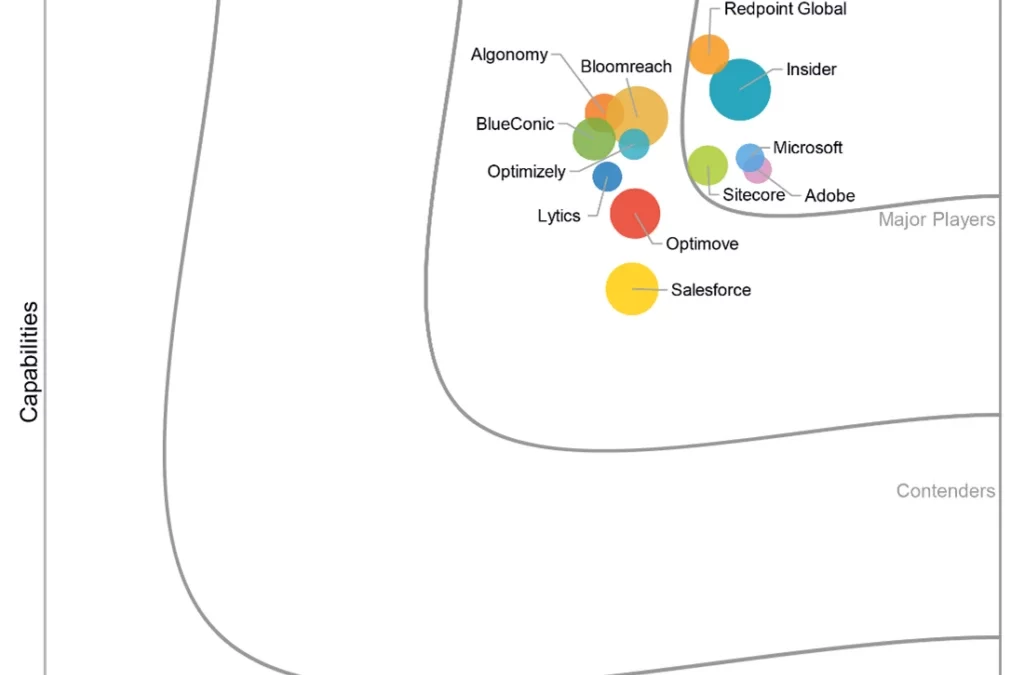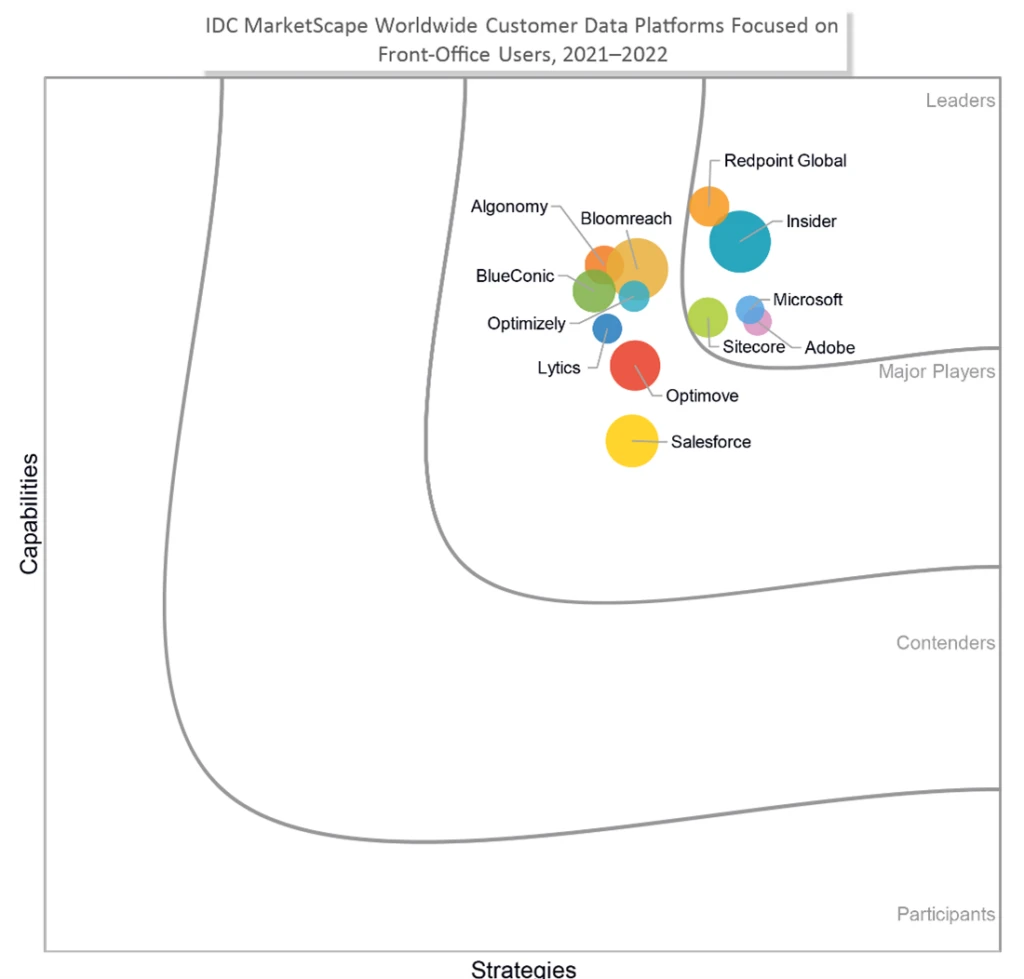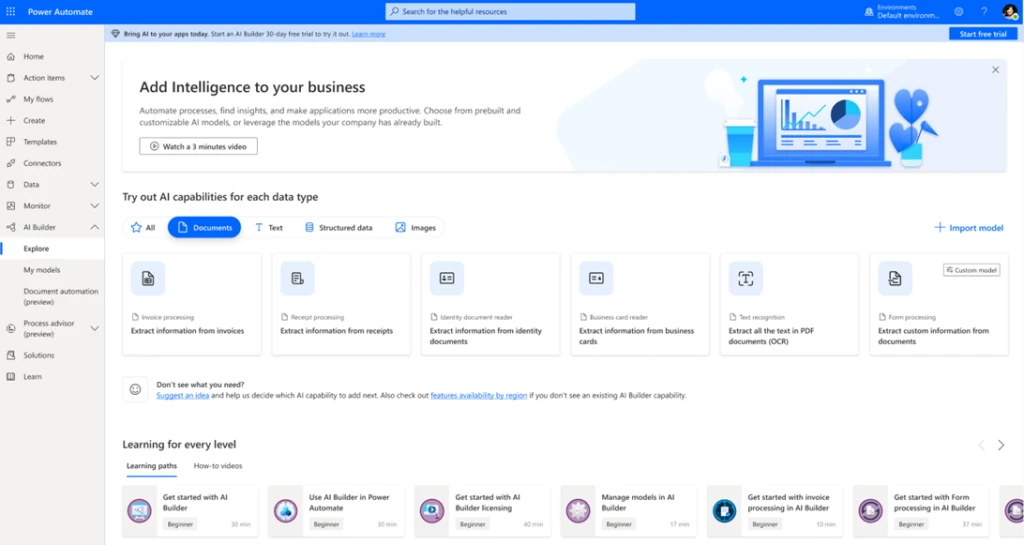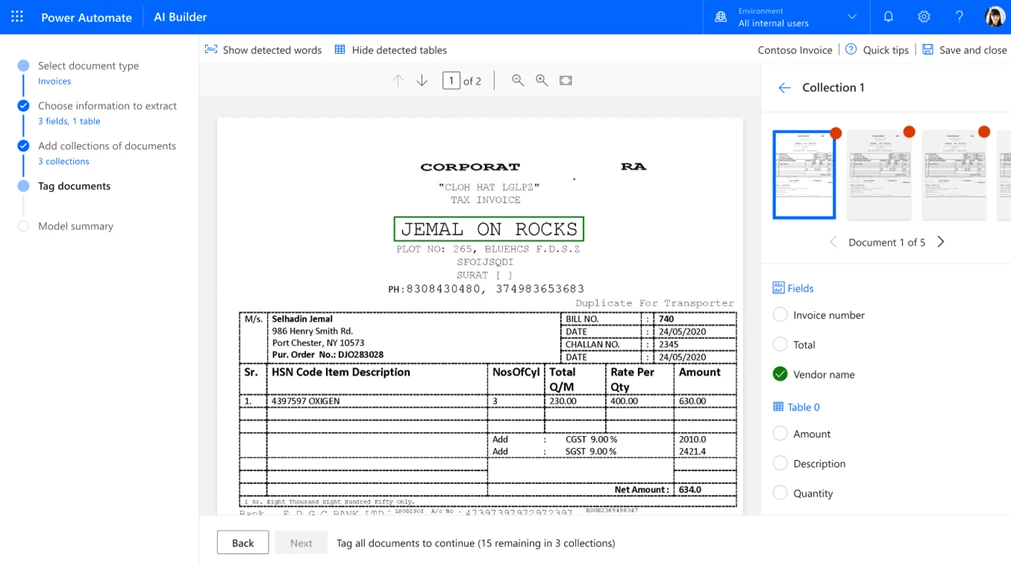Working with APIs in Power Platform for beginners
This article is contributed. See the original author and article here.
| Method | Action |
| GET | read |
| PUT | update |
| POST | write |
| PATCH | update partially |
| DELETE | remove |
This article is contributed. See the original author and article here.
| Method | Action |
| GET | read |
| PUT | update |
| POST | write |
| PATCH | update partially |
| DELETE | remove |
This article is contributed. See the original author and article here.
In response to the enthusiastic adoption of the eleven Synapse Database Templates for which we announced availability, in public preview, in November and December 2021, we’re pleased to announce today that we are making available, in public preview, additional Synapse Database Templates for four more industries:
The Synapse Database Template for Automotive Industries is a comprehensive data model that addresses the typical data requirements of organizations engaged in manufacturing automobiles, heavy vehicles, tires, and other automotive components.
The Synapse Database Template for Genomics is a comprehensive data model that addresses the typical data requirements of organizations engaged in acquiring and analyzing genomic data about human beings or other species.
The Synapse Database Template for Manufacturing is a comprehensive data model that addresses the typical data requirements of organizations engaged in either discrete or continuous manufacturing of a wide range of products. Portions of this database template are also included as part of the previously announced Consumer Goods database template and in the Automotive Industries and Pharmaceuticals database templates being announced today so companies in those industries will likely prefer to use those database templates rather than the general purpose Manufacturing industry database template as they contain additional content specific to those industries in addition to the content contained in the general Manufacturing database template.
The Synapse Database Template for Pharmaceuticals is a comprehensive data model that addresses the typical data requirements of organizations engaged in creating, manufacturing, and marketing pharmaceutical and bio-pharmaceutical products and medical devices.
Most of the Synapse database templates contain many different business areas that together comprise each of these very large industry-specific data models. For example, in addition to business areas such as Product, Inventory, and Human Resources, there is also an Emissions business area which provides support for data used to report greenhouse gas emissions (including scope 1, scope 2, and scope 3 emissions), an area of significant focus for many of our large customers.
These 4 additional database templates can be accessed now in Azure Synapse either in the gallery or by creating a new lake database from the Data tab and selecting + Table and then From template.
Learn more:

This article is contributed. See the original author and article here.
Organizations across industries and around the world are seeking new ways to unlock their customer data to provide high-quality, connected customer experiences. Microsoft’s work to help enterprises, especially those in the retail, consumer brands, healthcare, manufacturing, and media and advertising industries to meet their customers’ expectations by delivering privacy-aware, consent enabled personalization has gained some recognition.
Microsoft is thrilled to be named a Leader in the IDC MarketScape for Worldwide Customer Data Platforms Focused on Front-Office Users 2021-2022 Vendor Assessment (doc # US47524621, December 2021). The IDC MarketScape is the first research by a major analyst firm evaluating customer data platform (CDP) vendors.

Source: “IDC MarketScape: Worldwide Customer Data Platforms Focused on Front-Office Users 20212022 Vendor Assessment”, By: Gerry Murray, David Wallace & Michelle Morgan, December 2021, IDC # US47524621
The report highlights customer data management, including 360-degree customer view, improving customer experience, and globalization as top capabilities within Dynamics 365 Customer Insights. Dynamics 365 Customer Insights helps customers unify all their B2C and B2B customer data to generate AI-powered insights in real-time, creating a single view of the customer. Interactive reports help marketers optimize their customers’ journeys, and AI-powered insights speed the prediction of customer needs.
Dynamics 365 Customer Insights elegantly supports both technical and non-technical usersbe it through a visual UI/drag and drop interface for marketers or through advanced analytics for data scientists. The IDC MarketScape said to, “Consider Microsoft if you have significant investments in Microsoft’s Dynamics 365 applications such as marketing or sales or if you are looking for user-friendly AI/ML modeling capabilities that do not require marketers (and other LOB users) to be data scientists.” The report also noted, “Microsoft’s CDP segments are created through automated discovery powered by AI, API configuration, and visual UI/drag and drop interface for markets and through analytic/SQL queries for data scientists. Segments are updated based on a variety of factors such as streaming web session data, geolocation, and dynamic modeling and based on batch data updates.”
The IDC MarketScape noted, “Microsoft is strong in this important area for enterprise CDP buyers as the speed, scale, and response time for processing high volumes of customer data are an important enabler of personalization and customer experience.”
The IDC MarketScape also stated, “Microsoft has strengths in all aspects of globalization: number of languages supported in its CDP; number of countries with customers, sales, service, and support; and regional implementation partners.”
We invite you to read the IDC MarketScape for Worldwide Customer Data Platforms Focused on Front-Office Users 2021-2022 report excerpt for full details.
Find out how Microsoft customers are creating great brand and customer experiences with Dynamics 365 Customer Insights.
Campari Group raises the bar for customer experiences with a 360-degree customer view that enhances the personalization of its marketing, sales, and customer service efforts.
Chipotle served up personalized experiences to convert more guests into loyalty program members.
Walgreens Boots Alliance is unlocking insights that power more engaging, personalized customer experiences.
About the graphic:
IDC MarketScape vendor analysis model is designed to provide an overview of the competitive fitness of ICT suppliers in a given market. The research methodology utilizes a rigorous scoring methodology based on both qualitative and quantitative criteria that results in a single graphical illustration of each vendor’s position within a given market. The Capabilities score measures vendor product, go-to-market and business execution in the short-term. The Strategy score measures alignment of vendor strategies with customer requirements in a 3-5-year timeframe. Vendor market share is represented by the size of the circles. Vendor year-over-year growth rate relative to the given market is indicated by a plus, neutral or minus next to the vendor name.
The post Microsoft named as a worldwide Leader in IDC MarketScape for Customer Data Platforms appeared first on Microsoft Dynamics 365 Blog.
Brought to you by Dr. Ware, Microsoft Office 365 Silver Partner, Charleston SC.
This article is contributed. See the original author and article here.
This is the next segment of our blog series highlighting Microsoft Learn Student Ambassadors who achieved the Gold milestone and have recently graduated from university. Each blog in the series features a different student and highlights their accomplishments, their experience with the Student Ambassadors community, and what they’re up to now.
Today we meet Rogerio Rodrigues who is from Brazil and recently graduated from the Universidade Federal de São Paulo with a master’s degree in computer science.
Responses have been edited for clarity and length.
When you joined the Student Ambassador community in 2012 as an undergraduate student at Universidade Federal de São Paulo, did you have specific goals you wanted to reach?
I had some goals like learning to speak in public because I was very shy but wanted to contribute to public events in the Student Ambassador program. I also wanted to go deeper into Microsoft technologies like Azure, DevOps, and Mobile Development with Xamarin. I had a dream to work at Microsoft as an employee. The community helped me a lot with these goals. I learned public speaking and became an MBA technical training teacher. I learned a lot about Microsoft technologies, received recognition in the technical community, and became a Microsoft Most Valuable Professional (MVP). I am pleased to have been part of the community, which undoubtedly contributed the most to my professional career.
As a Student Ambassador, what were the accomplishments that you’re the proudest of and why?
In 2018 and 2019, together with other Student Ambassadors and Microsoft MVPs , we created an initiative called Natal Nerd where we collected gifts, toys, and cash as donations to help orphans and at-risk children for Christmas. Several Student Ambassador events and lectures about Microsoft technologies were held at universities with companies in São Paulo, and the entry fee was a toy to donate to Natal Nerd. We presented at 23 universities in the country and reached more than 2,500 students and professors, disseminating and sharing knowledge about Microsoft technologies and the Imagine Cup. We were able to collect gifts to improve Christmas for more than 800 children.
In 2019, another Student Ambassador and I delivered 4 talks at 11 technical events at the Microsoft Student Partners Tech Days at eight universities in Brazil with the help of MVPs [Editor’s note: Microsoft Student Partners is the former name of the Microsoft Learn Student Ambassadors program]. We delivered another four talks in countries such as Peru, Nicaragua, Colombia, and Mexico with the help of other Student Ambassadors.
In 2019 and 2020, I was chosen to go to the Microsoft Student Partner Summit and the Imagine Cup Final because of my contributions. The events in 2019 were amazing – opportunities that I will never forget because they was very valuable to me. Even though the events in 2020 were virtual, I was very happy to have received the recognition.
I also created a Student Ambassador Latam YouTube channel and Meetup group with more than 2000 subscribers.
What are you doing now that you’ve graduated?
My dream was to become a Microsoft employee. I had already tried twice and didn’t pass the interviews, but last year I became a Customer Engineer at Microsoft and was assigned to serve large public sector banking clients. I’ve also started my part-time doctorate program in computer science with a focus on environmental science and weather satellites. After completing my doctorate, I plan to do a post-doc in my line of research, continue to teach at universities, and contribute to science.
If you could redo your time as a Student Ambassador, is there anything you would have done differently?
The only thing I would have done differently would be to study more English right away when I joined in order to communicate more easily with other Student Ambassadors around the world. Learning to speak English better made a big difference for me in 2019 when I was at the Student Partner Summit for the first time because in addition to learning new technical content, I met many other Student Ambassadors from other cultures and the amazing Student Ambassador Program Team.
If you were to describe the community to a student who is interested in joining, what would you say about it to convince him or her to join?
If you desire to be a unique professional, you should apply to the Student Ambassadors program. In addition to receiving special treatment in the community, you will have access to a lot of technical information, you will have the opportunity to network with people from all over the planet, and you will have contact with Microsoft professionals where you can find excellent opportunities.
Furthermore, the community helps you have a much broader view of technology than just Microsoft technologies, as you will have contact with different areas and the opportunity to work on fantastic projects.
What advice would you give to new Student Ambassadors?
Actively participate in the community. Join other Student Ambassadors in Leagues or groups to create initiatives. It’s fantastic, and you learn a lot. Make contact with other Student Ambassadors as you will experience different cultures, practice languages, learn more technology, and perhaps share your knowledge with other Student Ambassadors. Actively contribute to your local community and promote content at your university. These actions will help you to secure further knowledge and develop new skills. The community provides a sea of opportunities.
What is your motto in life, your guiding principle?
My motto in life is “Be different. Help lift but not drop”. Helping those we can help will bring us great experiences, and we will be doing our part in making the world better.
What is one random fact about you that few people are aware of?
I’m a big fan of Star Wars. I have a big tattoo on my back that’s the design of an X-Wing spaceship with the 3 characters I like–Luke, Leia, and Rey Skywalker.
Good luck to you in the future, Rogerio!
Readers, you can reach Rogerio on Twitter, Instagram, and LinkedIn.

This article is contributed. See the original author and article here.
As digital transformation drives innovation and transforms the way we work, we see business operations and traditional internal processes being disrupted daily. To adapt and scale changes across their business, many organizations are overwhelmed and faced with digitizing thousands of manual checklists, paper forms, documents, and more. The good news is today’s Microsoft solutions make this transition easier than ever before. With Microsoft’s suite of low-code development solutions (e.g., Microsoft Power Platform, Power Automate, and AI Builder), employees of all skill levels can create and customize business applications and processes. By combining these solutions with Microsoft Dynamics 365 Guides, a mixed reality application that offers step-by-step, hands-free work instructions and collaboration, you can convert your existing 2D manuals into 3D holograms, rather than transferring manually. Once converted, organizations can use Dynamics 365 Guides to provide immersive, on-the-job guidance that will increase efficiency, increase knowledge retention, and enable your organization to adapt at the speed of change.
With Dynamics 365 Guides, authoring instructions is as simple as creating a presentation in Microsoft PowerPoint. Using the Guides PC and HoloLens apps, you create and edit instructions by dragging and dropping 2D and 3D content into your real-world environment to show users how and where to complete tasks. However, converting an existing multi-page manual by copying the information from scratch makes the authoring process feel time-consuming and daunting. This is where Microsoft Power Platform AI Builder comes in. AI Builder empowers anyone to build, train, and publish AI models, enabling you to infuse AI into your regular processes. You can create and train a custom AI model to extract text information from a variety of paper manuals in minutes, or use one of the pre-built models.
Using Power Automate, you save the extracted information to Microsoft Dataverse (an enterprise-grade intelligent scalable data platform that powers business applications like Dynamics 365 Guides). By storing the data in a format readable by Dynamics 365 Guides, users can simply open the Dynamics 365 Guides PC and HoloLens apps and add 3D content on top of the text instructions extracted from existing manuals.

In this blog, we’ll focus on how to use the AI Builder form processing model to extract and convert information and create a guide. Every organization has work instructions that come in different formats, such as checklists for inspections, training documentation, and standard operating procedures. By using the form processing model, you can read and save information from existing documents such as images or PDF files.
When you automate this process, you save valuable time by reviewing, extracting, organizing, and saving the data automatically by using Power Automate and Power Apps.

Creating a guide using a custom AI model and Power Automate requires three simple steps:
For a closer look at each step below, follow along with a team at Toyota Motors North America in this video, at the 2:40 min mark.
Whether creating a single manual or hundreds, AI Builder and Dynamics 365 Guides can transform instructions and training, making your processes easier, smarter, and faster. Seamlessly capture, translate, and extract information to unlock a new way of working and save your teams hours of time.
“Customers have been able to save months of deployment time by using AI Builder and Guides, allowing them to quickly integrate mixed-reality work instructions into their daily workflows without any development expertise. They’re able to update content they already have into 3D holographic instructions for a variety of scenarios, including assembly, changeovers, training, and service and maintenance, resulting in improvements to safety, efficiency, and reduced onboarding time.”Shirley Ho, Senior Designer, Dynamics 365 Guides.
Ready to design a guide using AI Builder, Power Automate, and Dynamics 365 Guides today? Here’s how to get started.
AI Builder in Power Automate
Dynamics 365 Guides
The post Convert data into 3D assets using Dynamics 365 Guides, AI Builder, and Power Automate appeared first on Microsoft Dynamics 365 Blog.
Brought to you by Dr. Ware, Microsoft Office 365 Silver Partner, Charleston SC.
Recent Comments